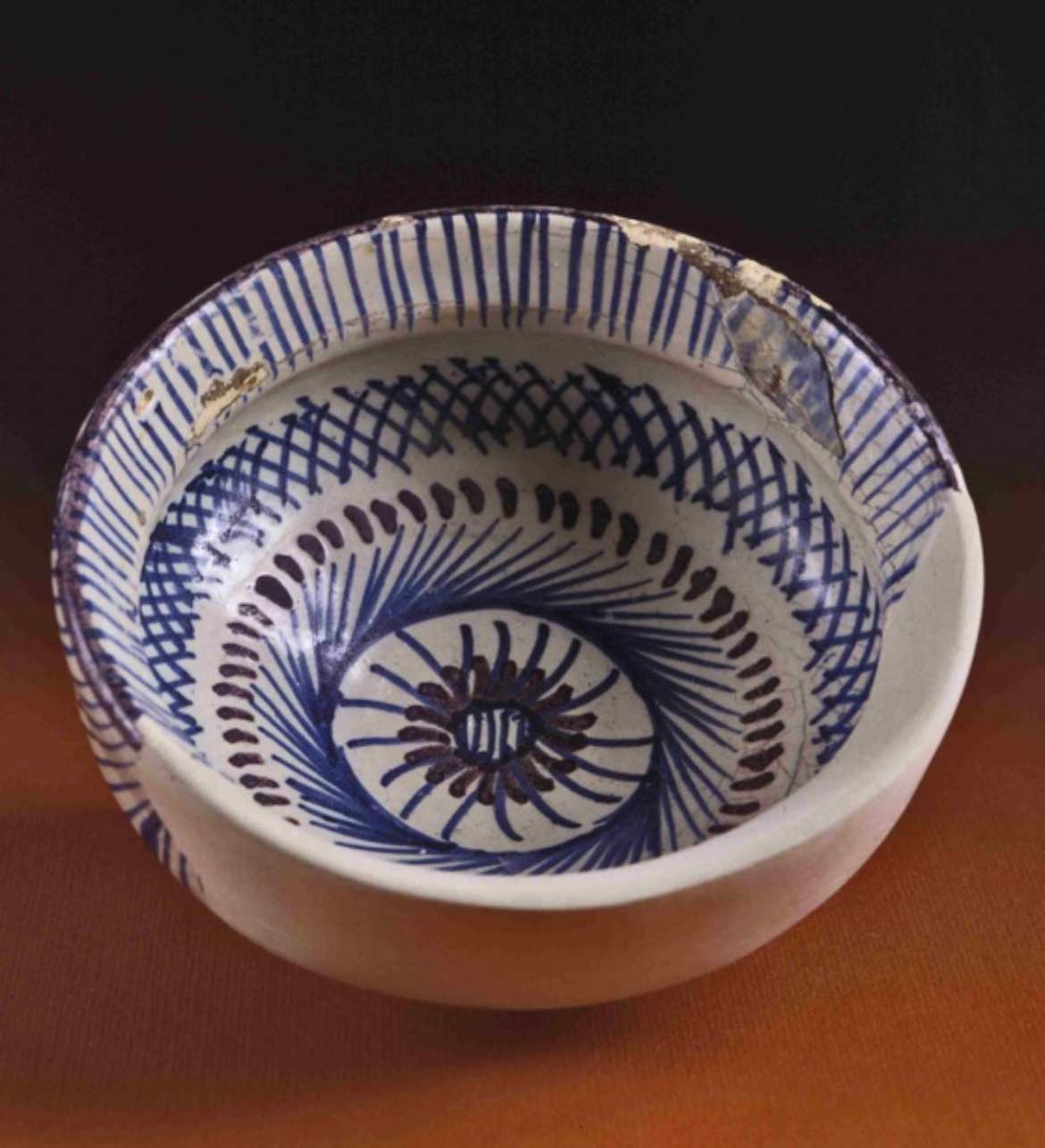Museums and works of art
Ancient majolica of Bacchereto
The detached section of the “F. Nicosia “at the complex of S. Maria Assunta in Bacchereto
Between the last decades of the fourteenth century and the end of the sixteenth century in Bacchereto – a village in the municipality of Carmignano – a flourishing production of high quality majolica was exported to most of Tuscany. This is testified by archival sources, the discoveries made in various locations in the region and the excavation of a large furnace landfill carried out in 1974 by the Superintendency of Antiquities of Etruria in Novelleto in 1974 of a furnace landfill.
An example of these finds, which represent the ceramic production that marked the local history between the Middle Ages and the Renaissance, is exhibited in the S.M. Assunta in Bacchereto.
It is archaic majolica – majolica produced in Tuscany from the mid-1200s, which continued to be made until the end of the second half of the fourteenth century. It is characterized by the brick red color of the dough and by the white tin-based enamel coating decorated with green copper and manganese brown, with yellow touch-ups in the so-called green family. Among the materials found in the landfill, open forms predominate – basins, coolers, bowls, bowls, bowls and saucers. Fragments referable to closed-shaped containers, such as jugs, are rare. The most characteristic and distinctive form of the local shops is the ‘Bacchereto type’ bowl, which will continue to be made and remain unchanged even in subsequent productions.
Between the last decades of the fourteenth century and the end of the sixteenth century in Bacchereto – a village in the municipality of Carmignano – a flourishing production of high quality majolica was exported to most of Tuscany. This is testified by archival sources, the discoveries made in various locations in the region and the excavation of a large furnace landfill carried out in 1974 by the Superintendency of Antiquities of Etruria in Novelleto in 1974 of a furnace landfill.
An example of these finds, which represent the ceramic production that marked the local history between the Middle Ages and the Renaissance, is exhibited in the S.M. Assunta in Bacchereto.
It is archaic majolica – majolica produced in Tuscany from the mid-1200s, which continued to be made until the end of the second half of the fourteenth century. It is characterized by the brick red color of the dough and by the white tin-based enamel coating decorated with green copper and manganese brown, with yellow touch-ups in the so-called green family. Among the materials found in the landfill, open forms predominate – basins, coolers, bowls, bowls, bowls and saucers. Fragments referable to closed-shaped containers, such as jugs, are rare. The most characteristic and distinctive form of the local shops is the ‘Bacchereto type’ bowl, which will continue to be made and remain unchanged even in subsequent productions.
S. Maria Assunta
The complex of S. Maria Assunta which houses the exhibition represents the heart of the ancient village.
The careful restoration and the historical archaeological investigation have allowed us to read in the walls brought to light wide glimpses of the history of the ancient ‘Castle’ dating back to the beginning of the XII century (the walls, the door, the street and the tower) and those of a pre-existing building of worship to the present church.

The Exposition
Examples of pottery
There are numerous examples of Italo-Moorish, the first Italian Renaissance majolica, born in the first decades of the fifteenth century (if not at the end of the fourteenth century) as a local imitation of imported Spanish-Moorish ceramics. This type of majolica was produced in large quantities in the middle Valdarno, and Bacchereto together with Florence and Montelupo was among the first production centers. The mixture that distinguishes it is clear, very purified, covered with white glaze and decorated in blue and brown, associated, at a more advanced stage of production, with brown, yellow or orange and sometimes green. Also in this case most of the containers found in the landfill are open in shape, even if the presence of closed shapes, jugs and small jugs increases considerably. However, the small bowl ‘Bacchereto type’ remains dominant. Animal and human figures, letters and heraldic motifs such as lily are added to the plant and geometric decorative elements predominant in archaic majolica.
The exhibition also includes an example of the abundant ‘biscuits’ recovered in the excavation of the landfill: pottery subjected to the first firing, then defective and therefore discarded.
A table is laid with the faithful reproductions of majolica.
S. Maria Assunta
The complex of S. Maria Assunta which houses the exhibition represents the heart of the ancient village.
The careful restoration and the historical archaeological investigation have allowed us to read in the walls brought to light wide glimpses of the history of the ancient ‘Castle’ dating back to the beginning of the XII century (the walls, the door, the street and the tower) and those of a pre-existing building of worship to the present church.
The Exposition
Examples of pottery
There are numerous examples of Italo-Moorish, the first Italian Renaissance majolica, born in the first decades of the fifteenth century (if not at the end of the fourteenth century) as a local imitation of imported Spanish-Moorish ceramics. This type of majolica was produced in large quantities in the middle Valdarno, and Bacchereto together with Florence and Montelupo was among the first production centers. The mixture that distinguishes it is clear, very purified, covered with white glaze and decorated in blue and brown, associated, at a more advanced stage of production, with brown, yellow or orange and sometimes green. Also in this case most of the containers found in the landfill are open in shape, even if the presence of closed shapes, jugs and small jugs increases considerably. However, the small bowl ‘Bacchereto type’ remains dominant. Animal and human figures, letters and heraldic motifs such as lily are added to the plant and geometric decorative elements predominant in archaic majolica.
The exhibition also includes an example of the abundant ‘biscuits’ recovered in the excavation of the landfill: pottery subjected to the first firing, then defective and therefore discarded.
A table is laid with the faithful reproductions of majolica.




